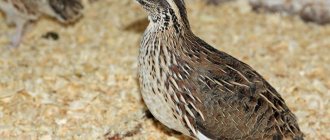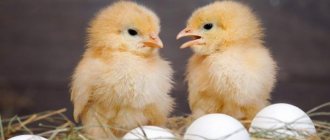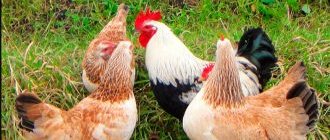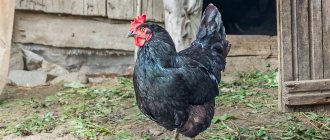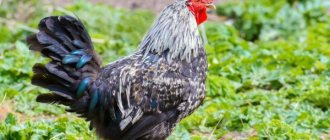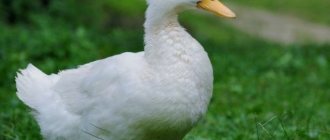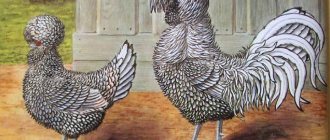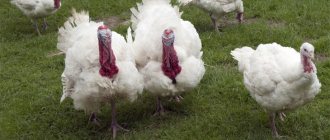The benefits of living in an apartment
According to the beliefs of eastern peoples, keeping quails in an apartment will bring happiness to the house. Looking at this issue through a practical “lens”, we discover that these little birds are a storehouse of health.
Practical benefits:
- quail eggs are a source of protein, not to mention the content of nutrients and minerals, the concentration of which is much higher than chicken eggs;
- Quail meat is in demand among people who watch their figure and health. Great for preparing dietary dishes;
- the shell is a source of calcium, which helps strengthen human bones;
- Quail droppings are used as fertilizers for house plants.
Quail is an unpretentious bird species that is quite adapted for breeding and living in an ordinary apartment. At the same time, the breeder will not need to spend much money on arranging the bird’s home.
Minimum required for maintenance
First of all, you need to decide on the number of birds. Quails in an apartment will not take up much space if there are no more than 15 - 20 birds.
What do you need?
- Cage, preferably rectangular. It can be made independently or purchased at a specialized store.
- Place.
- Quails feel good in rooms where the temperature does not drop below 18-200 C.
- Complete absence of drafts.
- Dim lighting (excess light leads to an aggressive and stressed state of the bird).
- Ensure silence and eliminate excess noise sources.
- Nutrition. The cage is equipped with devices for supplying food and water.
If you plan to raise more than 20 quails, it is difficult to get by with just one cage. For the comfort of the bird, a special cage battery is purchased or made.
Where to get young animals
The future breeder has two ways to acquire young quail chicks.
It is not difficult to hatch young animals from hatching eggs yourself.
- Hatching eggs. All you have to do is find a corresponding advertisement on the Internet. There are more than enough sellers of such goods, and this suggests that anyone can breed quails. However, in addition to the cage, you need to worry about making or purchasing an incubator and brooder; the process of growing and breeding quails will become cyclical.
- Buy young chicks. A simpler option. It is recommended to buy a population of quails that are at least one and a half months old.
Before purchasing chicks, you need to carefully examine their appearance. The plumage is dry and clean, there are no growths near the beak. Healthy chicks are active and have a good appetite.
At the initial stage, you should decide on the purpose of purchasing quails. The absence of a male does not affect egg production. If breeding is planned in the future, then it is enough to add one male to a family of 4 females.
Young animals are kept in cages in groups, and adult families must be separated by partitions.
It is important to take into account that quails are divided into laying hens and meat birds, and depending on your goals, choose the right breed.
For example, the Japanese breed of quail has proven itself well as a quiet and unpretentious bird, and the Pharaoh breed is excellent for producing meat.
Choosing an advantageous breed for an apartment
To successfully breed poultry, you need to know which species is best suited and which is more profitable to keep. There are more than 40 domestic quail breeds. They are divided into meat and egg directions. At home, they usually choose a breed related to the egg breed.
Japanese quail is a popular egg-laying breed. It is characterized by a small but elongated body and short legs, light brown color of the body. It is considered the ancestor of domestic quails. Lays from 280 to 300 eggs. It is distinguished by early ripening. Females already lay eggs at the age of 2 months. The fertility rate is 90 percent. The weight of males reaches 130 grams, and females - 150 grams.
Another common breed is the Pharaoh. These quails are classified as meat, but are often used for eggs. It is dark brown in color with black spots. They are more demanding in content. Females begin to lay eggs only at the age of 5-6 weeks. Males can mate at the age of 1.5 months. The female is capable of laying from 180 to 200 eggs per year. The indicators are extremely small, but are compensated by the size of the egg. Its weight reaches 20 grams, while the rest have only 12. Females weigh more than 300 grams, and males weigh up to 250.
Estonian quails are considered the best type of egg production - they produce up to 300 eggs per year. This is the maximum productivity among other species. They are similar to Japanese quails in appearance, but the main difference is a more rounded, small body. The plumage is light brown with black stripes. The female weighs about 190 grams. Males weigh less. A distinctive feature of the species is the fertilization rate of females is 90%, the hatchability of offspring is 80% and the survival rate of chicks is 100%. Estonian quails begin to lay eggs at the age of 1.5 months, but after six months they are recommended to be replaced, as productivity decreases. Another advantage is the long laying period - 35-45 days.
French quails cannot be considered only egg or only meat. Refers to two directions. The alternation of brownish and yellowish feathers gives the color a golden hue. The color is more intense in males. Individuals weigh 150-200 grams. With careful selection, the weight of males increases to 300 grams, and the weight of females reaches 400 grams. The egg production rate is low - only 225 eggs per year. This disadvantage is compensated by the large size of the egg - up to 16 grams. Birds are unpretentious in maintenance and nutrition.
Cell
Having decided on the location of the cage, you need to take care of:
- sizes. The optimal cage size for a quail family of 5 heads will be 30 x 40 x 25 cm;
- designs. The cage must have a mesh, through which the bird droppings will fall onto a special tray (for ease of cleaning and getting rid of unpleasant odors). Additionally, the cage requires an inclined tray for collecting eggs and a device for supplying water and food. There is no need to arrange nests or perches in the cage itself - their absence does not affect egg production;
- security. The cage should not have a very low and hard ceiling. The birds will try to fly and will probably get hurt;
- cleanliness Feeders and drinkers are located on the outside of the cage in order to maintain cleanliness inside and ease of maintenance.
Accommodation
One of the key factors affecting egg production is noise. Raising quails involves placing the cage in a quiet place, with limited access to strangers. It is not recommended to install cages in the kitchen or bedroom.
Keeping quail not only in the apartment, but also on the balcony requires thorough daily cleaning, otherwise the specific smell will cause discomfort to the breeder. Breeding quails on the balcony requires a number of conditions under which the birds will develop well and lay eggs.
Conditions for good egg production
- Length of daylight. The place where the poultry is kept should be illuminated 17 hours a day.
- Ventilation. The room needs ventilation.
- Nutrition. Birds need constant access to food and clean water.
- Purity. It is necessary to regularly clean the cage of droppings and other waste from quails.
- Temperature. The room must be maintained at the same temperature, but not lower than 18-200 C.
- Humidity. Indoors it is 60%.
Indoor air humidity - no more than 60%
Feeding
The simplest and most effective way to feed quail is special purchased feed, which includes the necessary elements. In this case, there is no need to add additional additives to the birds’ diet. If there is no food for quail on sale, you can use similar products for chickens. The difference lies in the lower protein content, which ensures a high rate of egg production in birds.
Chicks
If chicken feed is used, crude protein supplements are required. This component is available in:
Specialized feed for quails costs 90% less than for parrots. If the temperature in the room where the birds are kept decreases or the length of the day increases, the volume of portions increases.
The daily norm includes 2-4 feedings. If you have a bunker feeder, the amount of feed in it will last for several days. To prevent food from spoiling, it should be stored in a cool, dry place with minimal light exposure.
Chicks can also be fed formula. Self-production of feed is carried out in the presence of: grain, protein substances, meal, cake, vitamins and microelements. The components are loaded into the grain crusher. When the birds mature, it is recommended to produce this food in granules.
Adult bird
When feeding quails on your own, you need to take into account that the basic diet includes:
It is also possible to use crushed shells.
In order for an adult female to lay eggs well, a quarter of her diet should consist of raw proteins. In Japan, it is popular to feed quail mixtures that include rice and fish scraps. These components are mixed in equal proportions and then exposed to the birds. To avoid infection with parasites, the fish should be boiled first. To increase the vitamin content in the feed, greens are added. It can be used unlimitedly.
There must be clean water in the quail cage. It changes from 1 to 2 times a day. At the same time, water containers are washed.
Feeding quails should be based on the following principle:
- in the morning: from millet, boiled fish and chopped herbs;
- for lunch: from wheat bran, grain mixture and grated carrots;
- in the evening: from millet, wheat, corn, boiled fish and chopped herbs.
In terms of volume, the largest portion is the evening one. Feeders can be made from any material except wood. Salt poses a danger to the life of quails, so its use in feeding birds is prohibited.
Nutrition
Quails need free access to food, but do not overfeed them, as this may affect egg production. The best option is feeding at the same time period, calculating that the birds will eat the food within half an hour.
The breeder has two options for providing food:
- buy factory-made feed;
- make your own food.
The diet of quails must include:
- crushed corn grain;
- wheat;
- soy;
- earthworms and small insects;
- vegetable waste.
For laying quails, it is important to include food additives in the diet:
- fishmeal;
- fish oil;
- vegetable oil;
- minerals and vitamins;
- lime, chalk or crushed eggshells.
How to maintain them and where to start?
You can keep a couple or several quails in a city apartment in an ordinary cage for songbirds. But it is best, as practice shows, to use a special rectangular cage. All sides are covered with plywood and only the front wall is made of mesh. Purchased and homemade designs are suitable. If you want to keep more than 50 birds, then in this case you should choose a cage battery.
You can raise poultry in an ordinary room, as well as on an insulated balcony or loggia. Of course, the latter option is more acceptable, since it will be easier to install the hood outside. But let's look at all the main aspects in more detail. So, to breed quails in an apartment you need:
- the bird itself;
- cages (15 individuals can be kept in a cage 55x50x25 cm);
- feed;
- place to place cells;
- care equipment.
Bird
In our case, you need to purchase quails at the age of 1-1.5 months. The young animals are already able to tolerate moving well, quickly get used to new living conditions, and adapt to the food. When purchasing, pay attention to the appearance of the chicks. They should be active, cheerful, with a good appetite, with good plumage, and without any growths on the paws or beak. Feathers must be clean and dry.
It is best to buy a Japanese breed, since it has been kept at home for centuries. “Japanese women” are unpretentious and quiet.
Cell
The size of the cage will depend on the number of birds kept. If you breed quails, then purchase both females and males at once. Plant them in families at the rate of 4 females per 1 male in a cage measuring 30x40x20 centimeters. You can make it yourself, or you can buy it ready-made. To maintain cleanliness, such a house must have a mesh bottom, as well as a special tray for collecting litter. And also an inclined mesh tray for collecting eggs.
It is advisable to provide the possibility of partitions in one cage. The young are kept in groups, and for families during the breeding season they are divided into sections. If necessary, to save space, the cells are placed in several tiers, forming a battery. You can install a brooder on top.
Consider planting density. For example, for breeding stock you need to allocate 125 square meters. centimeters per individual, and for laying hens it can be 85 square meters. centimeters per 1 individual.
Feed
You can feed quails with commercially purchased mixed feed, as well as home-made feed. The basis of the bird's diet is crushed corn, wheat and soybeans. The diet of small laying hens must include food additives in the form of fish meal, fish oil, vegetable oil, minerals and vitamins. What and how to feed the bird, read here Proper diet
Place to place the cage
This point is perhaps the most important for indoor poultry keeping. For normal development and good egg laying, quails need a quiet, well-ventilated room with the ability to maintain a 17-18-hour light regime. This room should be fairly humid (60%). As a rule, an insulated balcony or loggia is chosen for this.
You can keep the bird in a separate room, but preferably in one where people rarely visit, where there is no TV or other sources of noise. From a hygiene point of view, it is extremely undesirable to place cages in the kitchen, and even more so in the bedroom. The bird still, whatever one may say, has its own smell.
To keep birds on the balcony, you can build a special wooden frame in the form of a cabinet and place a cage battery there. The frame, if necessary, can be additionally insulated with polystyrene foam and plastic film. Such a cabinet will be convenient because you can insert a fan into it, as well as lamps for light.
Inventory
From the necessary equipment you will need to have feeders, drinkers, material and filler for cleaning. All this can be bought in the store. You can also make a drinking bowl and feeder yourself. Since birds need constant access to clean water, it is advisable to install automatic drinkers.
To make feeding easier (2-3 times a day), it is better to install an automatic hopper feeder. Also, if you are going to breed birds, you will need an incubator and a brooder for the chicks.
Conditions for keeping
Before you get quails in a city apartment, take a good look at whether your conditions for keeping the bird are appropriate. Let us remind you that these little laying hens need to constantly maintain the temperature at 18-20 degrees (higher is possible, but lower is bad). The air in the room should be fresh with good ventilation, but without drafts.
It is important to remember that, unlike other birds, quails are extremely demanding of light. They do not like and become stressed in bright light. The light should be about 5 p.m., but dim. It is in such conditions that they carry and grow well.
Another important condition is noise. To maintain a good microclimate in the cages, quails must be kept quiet. The noise of cars or television reduces egg production and leads to egg pecking. Also, birds should always be well-fed and watered. You need to feed 2-3 times at the same time at the rate of approximately 30 grams of food per individual. By observing all these conditions, you can be content with fresh, healthy quail eggs without even leaving your apartment. Good luck!
Breeding on the balcony
The most common location for quail cages is the balcony.
However, there are a number of requirements that must be met so that the birds will feel comfortable and will not die.
You can keep quails on the balcony, the main thing is to make sure there are no drafts
First of all, the balcony must be insulated and protected from drafts. Quails, although unpretentious, react sharply to drafts and a sharp drop in temperature below 18 degrees.
The requirements for equipment are the same as for keeping poultry in an apartment.
- Cell. Many quail breeders set up a place of residence for their chicks in old closets.
- Temperature. The balcony must maintain a constant temperature of 18 degrees.
- Drafts. It is necessary to exclude the formation of drafts, otherwise egg production will sharply decrease. In the worst case, even one sick chick can destroy all its relatives.
- Equipment for food and water.
Breeding quails on the balcony allows you to solve several problems associated with breeding and keeping quails. Firstly, this eliminates the noise component. Birds are a source of noise, but you won’t be able to hear them from the balcony. Secondly, a well-ventilated balcony with proper cleaning will eliminate the appearance of a characteristic odor. But still, it would be useful to equip the balcony with a hood.
Air temperature and humidity in the room
Proper room arrangement plays a key role in successful winter growing. For example, if you keep a small flock from several families, cages with birds can be placed in the corner of any heated room (Figure 2).
Figure 2. Arrangement of cages and premises for housing livestock
If the farm raises a large number of livestock, the arrangement of the premises will have to be approached more carefully. The ideal option would be to place cages or cell batteries in a permanent barn with good ventilation and heating capabilities. However, experienced poultry keepers keep birds not only in barns, but even in unused greenhouses, so in the following sections we will go into more detail about the different types of poultry housing.
To avoid unnecessary problems in winter, it is better to make cages from wood. Lattice cages have different thermal insulation. This is the kind of content that requires careful attention.
The room where the birds will be kept must be well ventilated, that is, eyes are required. Also, in order for quails to grow and develop well, they need light and sunlight.
The humidity in the poultry house with cages should be quite high. At the same time, the amount of water on the shelves is minimal. On especially cold and frosty days, you can resort to the following methods to maintain the required humidity:
- Hang a well-moistened cloth.
- Place a container of water in the middle of the house.
Quail kept at home does not tolerate drafts and sudden changes in temperature. If this happens, the birds begin to cluster in groups, while climbing on top of each other. This behavior can kill the birds.
In the poultry house where the quails are kept, the humidity should fluctuate around 50%. If the indicators drop below, the birds will begin to be thirsty and they will drink more water. Accordingly, appetite will decrease and the amount of food consumed will decrease. If the drought continues for a long period, then the number of eggs and the frequency of their production will decrease. Further, egg production will stop altogether.
The most ideal humidity level for home maintenance is 60-70%. In a natural environment, the bird can be found in swampy and damp areas.

